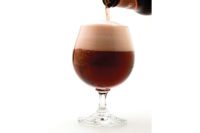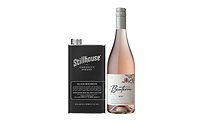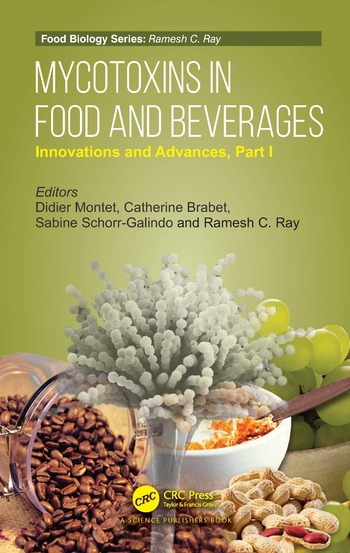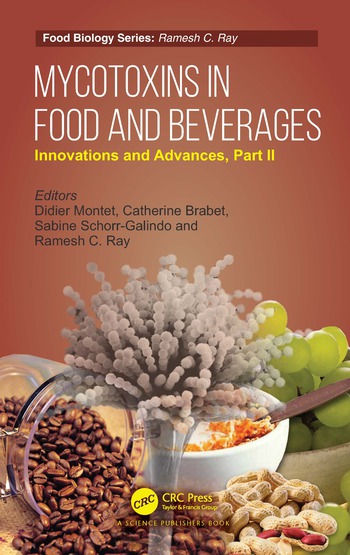Growth in craft beer, spirits markets fuels hops and malts usage
Expanding regions, flavor companies can defray supply chain issues




New and innovative products have helped contribute to SKU proliferation throughout the beverage industry, particularly within the craft beer and craft spirits markets. However, as these craft brewers and distillers look to push the envelope with their new releases, ingredient suppliers are looking to provide them with the tools they need to maintain that edge in the market.
“Customers are most interested in what is new and exciting, as the competition is intense in the beer market, and innovation is seen as a key factor in the success of the current front-runners,” says Ron Ryan, account executive with Minneapolis-based Cargill Malt, a division of Cargill. “Customers also are looking for more and more for consistency of their raw material supply as they grow and become more sophisticated.”
Ryan adds that the growth of the craft beer market in North America and globally has resulted in a higher usage rate of malts and hops for craft beer. “The immense popularity of the IPA style of beer and all of its variants has resulted in a significant increase in the use of malts and an even greater increase in hops,” he says.
In Beverage Industry’s March issue, Danelle Kosmal, vice president of the beverage alcohol practice at New York-based Nielsen, stated that hoppy-style beers, including IPAs and Pale Ales, contributed to the 45 percent growth within the craft beer segment. In fact, 200 new hoppy brands were introduced in 2014, she noted.
Al Murphy, vice president of the alcohol division with Piedmont, N.C.-based Mother Murphy’s Laboratories Inc., also notes the prevalence of hop-flavored beers, which has contributed to a price increase for the flowers used in the brewing process.
Murphy adds that the single-malt trend within the craft spirits market has impacted barley usage. “The category of single malt has been growing because of the demand of single-malt whiskeys,” he says. “The trend within single malts could be comparable to the movement within the coffee industry of single origin.”
Single origin and strength level also are impacting the use of hops in alcohol beverages. “In regard to hops, there has been a growth all over the board based on hops strength level within beer or hops used,” Murphy says. “Some beer manufacturers can use blended hops or single-origin hops. By using uniquely sourced hops, you can blend them with other hops to create unique, married flavor profiles.”
But no matter what trend is generating the use of hops and malts, the ingredients provide flavor components and support the scientific conversion to alcohol in the brewing and distilling processes. For flavor, malts can impart numerous profiles including smoke (peat), earthiness and honey, Murphy explains.
Cargill’s Ryan adds that malts can be processed in a number of ways to extract flavors from the grains. “Malt is used to supply carbohydrates, which will be converted to alcohol in all beer,” he says. “There are also a lot of flavor compounds that come from both base and specialty malts that contribute to the flavor of both of these types of beverages. Malt can be roasted, smoked or acidified, and many other processes [can be] applied to achieve specific flavor and color in the finished product.
“Hops add another flavor component to beer,” he continues. “They add bitterness, which is required to balance the sweetness of the malt, and they also supply aromas that are described as herbal, floral or fruity.”
Ryan adds that malts provide the enzyme package that is necessary to convert the large percentage of raw grains that distillers use in the production of whiskey, Scotch and bourbon.
Supplying consistency
Although hops and malts have benefited from the popularity of the craft beer and craft distilling markets, they are raw materials and, as such, must account for the volatility of weather patterns. Jason McCann, North American technical solutions manager for Cargill Malt, explains that every year is different when it comes to weather and that the best way to mitigate negative impacts due to challenging weather in certain regions requires one to expand their growing regions.
“Due to late-season rains, the barley crop in 2014 was very difficult, to say the least,” he says. “It is not only important that you get enough moisture, but it is also important when you get that moisture. Each year we work with what the farmers are able to give us, and we adjust our process accordingly to produce the best-quality product for our customers. It is something we have done for a very long time and have become quite good at it.”
Mother Murphy’s Murphy explains that weather patterns can have an impact on the profiles and consistency of raw materials like hops. Because of this, the flavor company has developed profiles to help support brewers that want to maintain a consistent flavor base. “As a flavor company, we can use ingredients to control that process to maintain a consistency that one will have a harder time doing from trying to achieve flavor from the hops source,” he says.
But before brewers and distillers invest in hop and malt resources, there are many factors they should consider when it comes to the supply chain, Murphy says. “A beverage-maker should be willing to make sure they can source their hops or malts from a specific region for an extended period of time,” he says. “There have been supply issues with segments of the industry, for hops especially, so it would make sense for them to do so.”
Mike Scanzello, account executive with Cargill Malt, echoes similar thoughts when it comes to the ability of the ingredient supplier to provide product for the long term. “Brewers should consider how robust the company’s barley supply chain is to better weather bad crop years,” he says. “They should choose a supplier with logistical infrastructure that is able to support their needs economically and efficiently and a broad technical and innovative team to help support their business goals.”
Full steam ahead
Although hops and malts are susceptible to the regions and weather patterns that surround them, ingredient suppliers anticipate that advancements will be done to support these raw materials.
“We expect it will continue to be challenging for barley as the demand continues to grow and the competition for acreage gets stronger for higher-cash crops,” Scanzello says. “We also anticipate continued research and development of new varieties with specific performance benefit components — for example, low protein, high yields and flavor stability — and agronomic improvements.”
When it comes to hops, Mother Murphy’s Murphy expects the prevalence of hoppy beers like IPAs will set in motion an increase of flavor profiles. “One trend that has continued to rise would be the sourcing of special unique hops from different regions that have different profiles,” he says. “Also, some folks within the industry have gone as far as growing and securing their own hops, which are unique to their own beer product.”
Looking for a reprint of this article?
From high-res PDFs to custom plaques, order your copy today!












